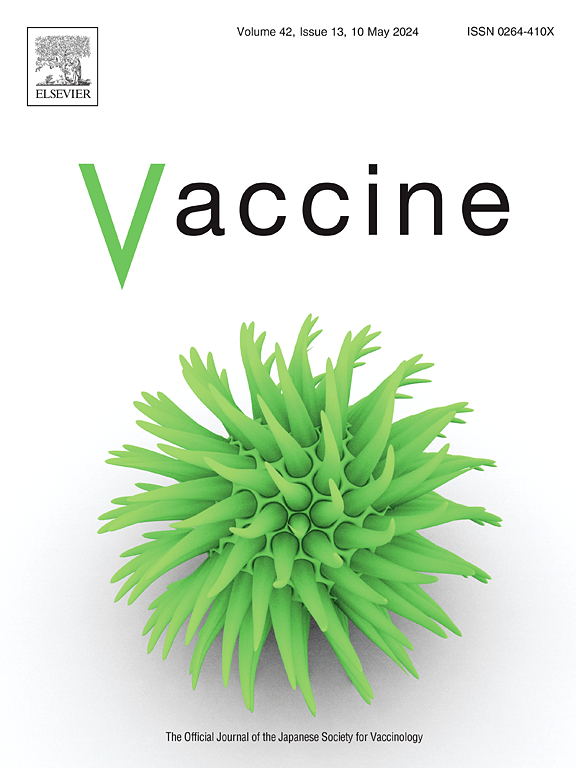英国RSV患儿抗病毒治疗的成本效益
IF 4.5
3区 医学
Q2 IMMUNOLOGY
引用次数: 0
摘要
背景:呼吸道合胞病毒(RSV)是全世界婴儿住院的常见原因,可引起显著的发病率和死亡率。最近,在一项针对因呼吸道合胞病毒住院的婴儿进行的III期试验中,抗病毒治疗Ziresovir显示出了令人鼓舞的结果。基于这些结果,本研究旨在调查Ziresovir在英国(UK)的成本效益。方法:成本效益分析(CEA)采用比例结果模型,利用AIRFLO试验的一线报告数据和已发表的数据来探讨Ziresovir给药对年龄住院婴儿的影响。结果:对所有住院婴儿给予Ziresovir每年可避免4例死亡(范围:2.8-4.5),216例ICU住院(范围:160-260)和3169例ICU住院日(范围:2348-3804),每位住院婴儿Ziresovir的MCEP为429.65英镑(95% CrI: 236- 771英镑)。如果针对早产儿,则MCEP增加到2108.38英镑(95%:870英镑- 3540英镑)。专门治疗患有慢性肺病(CLD)和先天性心脏病(CHD)的婴儿的MCEP分别为6557.24英镑(95%克朗:1250英镑- 14,920英镑)和9459.44英镑(95%克朗:3350英镑- 20,300英镑)。该模型对Ziresovir疗效、ICU入院风险和死亡率的变化高度敏感。结论:如果价格低于每剂430英镑,Ziresovir对所有因RSV住院的婴儿是一种具有成本效益的干预措施,而专门治疗高危- CLD和CHD婴儿的策略分别为6558英镑和9460英镑。结果对Ziresovir的疗效高度敏感,当AIRFLO试验的全部结果可用时,结果可以得到改善。本文章由计算机程序翻译,如有差异,请以英文原文为准。
Cost-effectiveness of anti-viral treatment for infants with RSV disease in the United Kingdom
Background
Respiratory Syncytial Virus (RSV) is a common cause of hospitalisation in infants worldwide, causing significant morbidity and mortality. Recently, the antiviral treatment, Ziresovir, has shown promising results in a Phase III trial conducted on infants hospitalised with RSV. Based on these topline results, this study aims to investigate the cost-effectiveness of Ziresovir in the United Kingdom (UK).
Methods
The cost-effective analysis (CEA) uses a proportional outcomes model using data from topline reports by the AIRFLO trial and published data to explore the effect of Ziresovir administration on hospitalised infants aged <24 months at admission. We estimated the reduction in ICU bed days and deaths and the maximum cost-effective price (MCEP) per treated individual, assuming a threshold of £20,000 per Quality-adjusted Life Year (QALY) gained.
Results
Administering Ziresovir to all hospitalised infants averts four deaths (range: 2.8–4.5), 216 ICU admissions (range:160–260) and 3169 ICU bed-days (range: 2348–3804) per annum, the MCEP for Ziresovir per hospitalised infant is £429.65 (95 % CrI: £236–£771). If preterm infants are targeted, then the MCEP increases to £2108.38 (95 % Crl: £870–£3540). The MCEP for exclusively treating Infants with Chronic Lung Disease (CLD) and Congenital Heart Disease (CHD) is £6557.24 (95 % Crl: £1250 - £14,920) and £9459.44 (95 % Crl £3350–£20,300) respectively. The model is highly sensitive to changes in the efficacy of Ziresovir and the risk of ICU admission and mortality.
Conclusion
Ziresovir is a cost-effective intervention for all infants hospitalised with RSV if priced below £430 per dose and strategies that exclusively treat high-risk- with CLD and CHD infants justify a higher price of £6558 and £9460 respectively. The outcomes are highly sensitive to the efficacy of Ziresovir and can be improved when the full results of the AIRFLO trial are available.
求助全文
通过发布文献求助,成功后即可免费获取论文全文。
去求助
来源期刊

Vaccine
医学-免疫学
CiteScore
8.70
自引率
5.50%
发文量
992
审稿时长
131 days
期刊介绍:
Vaccine is unique in publishing the highest quality science across all disciplines relevant to the field of vaccinology - all original article submissions across basic and clinical research, vaccine manufacturing, history, public policy, behavioral science and ethics, social sciences, safety, and many other related areas are welcomed. The submission categories as given in the Guide for Authors indicate where we receive the most papers. Papers outside these major areas are also welcome and authors are encouraged to contact us with specific questions.
 求助内容:
求助内容: 应助结果提醒方式:
应助结果提醒方式:


